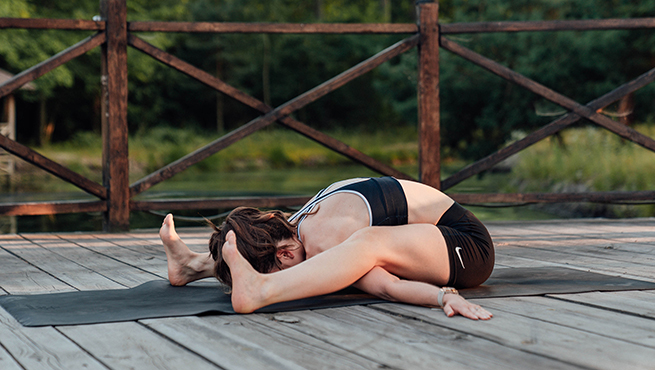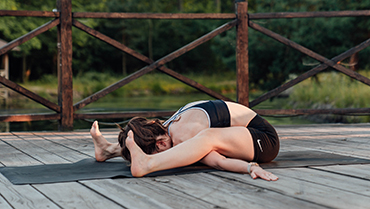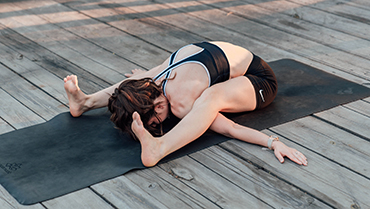Tortoise Pose - Kurmasana

Contents
A sitting forward bending pose, Kurmasana gets its name from the Sanskrit term ‘Kurma’ meaning turtle or tortoise, and ‘asana’ meaning posture or seat. The name is so given since, at the end of the pose, your body posture resembles that of a tortoise.
Also known as the Turtle or Tortoise Pose, this asana finds a mention in ancient 7th-century yogic illustrations. In modern yoga, Kurmasana is described amongst the Iyengar Yoga poses, where it is said to be dedicated to Lord Vishnu’s tortoise incarnation.
Pose Detail
- Difficulty: Advanced, Intermediate
- By Type: Flexibility Yoga Poses
- Body Position: Forward Bend Yoga Poses, Seated Yoga Poses
- By Benefit: Yoga Poses For Sciatica, Yoga Poses For Stress Relief
Step-by-Step Instructions
Benefits and Contraindications
Encourages mobility and flexibility in the hips.
Toning the abdominal area
Stimulating the digestive system along with kidneys and liver
Relieving lower back issues
Reducing sciatica pain
Enhancing blood circulation
Reducing stress and anxiety
Opening up the chest and lungs
Managing asthma symptoms
Reducing the risk of neurodegenerative diseases like Parkinson's and Alzheimer's
Injuries in the shoulder, arm or hips
Recent surgery
Pregnancy
Herniated discs
Arthritis
Sciatica
Fever, cold, or flu
Photo poses in different angles


Modifications, Props & Tips
One should keep in mind the following points before proceeding into Kurmasana.
Going straight into the asana would be ignorant and against personal wellness. So, newly enrolled practitioners must follow the guidelines before the practice.
Kurmasana is an intermediate/advanced forward bending posture and it requires flexibility. Therefore, do not force oneself to accomplished the pose. Modify the pose or use props if needed.
For instance, if practitioners are unable to touch their chin to the floor they can keep their head at some distance from the floor.
Bringing hands under the knees might be difficult in case of the rigid shoulder. This can be overcome by holding a strap in hand behind the back. Now, slowly reach to the middle of the strap from both sides.
To deepen the forward bend, one has must have flexible hamstring and inner thigh. Big toe pose and herons pose can be practiced for hamstring and butterfly for inner thigh, respectively.
Frequently Asked Questions
Variations
- Reclined Tortoise Pose
- Firefly Pose
Top Preparatory Poses
Top Follow-Up Poses
- Shoulderstand Pose
- Legs Up To The Wall Pose
- Plough Pose